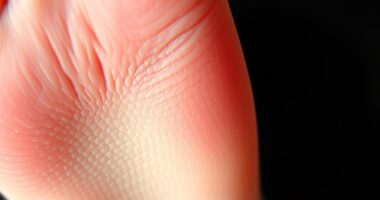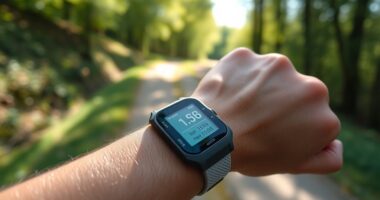GPS accuracy can be affected by factors like signal obstructions from buildings, dense trees, or indoor environments, which reduce satellite reception. Atmospheric conditions such as solar storms or heavy rain cause signal delays and errors. Urban areas with tall structures can cause multipath errors by reflecting signals, further decreasing accuracy. Using correction systems like WAAS or high-quality devices can help fix these issues. To learn more about improving your GPS precision, keep exploring the key causes and solutions.
Key Takeaways
- Obstructions like buildings, dense foliage, or tunnels block satellite signals, causing accuracy issues.
- Atmospheric conditions, including solar storms and heavy rain, distort signals and introduce errors.
- Multipath errors from signal reflections in urban environments lead to position inaccuracies.
- Using augmentation systems (e.g., WAAS, DGPS) and high-quality receivers can improve precision.
- Signal quality and strength are essential; open areas generally provide better GPS accuracy.

GPS accuracy determines how precisely your device can pinpoint your location, and understanding its factors can help you rely on it more effectively. One of the main elements influencing this accuracy is the quality and strength of satellite signals. These signals come from a network of satellites orbiting the Earth, and your device relies on receiving consistent, clear signals from multiple satellites to calculate your position accurately. When the signal is weak or obstructed—like when you’re indoors, under dense trees, or in urban canyons—your GPS can struggle to deliver precise readings. This is because the device has fewer satellite signals to triangulate your position, increasing the chance of errors. Ensuring you’re outdoors and in open areas generally improves signal reception, making your GPS more reliable.
Atmospheric interference is another essential factor affecting GPS accuracy. As satellite signals travel through Earth’s atmosphere, they encounter layers like the ionosphere and troposphere, which can cause delays or distortions. Variations in atmospheric conditions—such as solar storms, heavy rain, or rapid changes in temperature—can increase these delays, leading to inaccuracies in your device’s location data. For example, during solar activity, charged particles in the ionosphere can disrupt the signals, causing the GPS to report positions that are off by several meters or more. While modern GPS receivers are equipped with algorithms to compensate for some atmospheric effects, severe conditions can still degrade accuracy substantially. Additionally, the quality and strength of satellite signals play a critical role in the overall precision of GPS readings.
Furthermore, urban environments pose unique challenges. Tall buildings and structures reflect satellite signals, creating multipath errors where signals bounce around before reaching your device. This can confuse the GPS receiver, resulting in position errors or jittery movement on your screen. Similarly, tunnels, dense forests, or canyon-like landscapes can obstruct signals altogether, causing your device to revert to less accurate positioning methods or lose signal entirely.
To mitigate these issues, many GPS devices incorporate augmentation systems like WAAS (Wide Area Augmentation System) or DGPS (Differential GPS). These systems enhance accuracy by correcting satellite signal errors, especially those caused by atmospheric interference. Keeping your device updated with the latest software and using high-quality receivers also helps improve performance. When precise location data is critical, consider using external antennas or specialized GPS units designed for challenging environments. By understanding how satellite signals and atmospheric interference influence your device, you can take practical steps to maximize GPS accuracy, ensuring your navigation remains as dependable as possible.
Frequently Asked Questions
How Do Atmospheric Conditions Specifically Affect GPS Signals?
Atmospheric conditions affect your GPS signals through ionospheric delay and tropospheric refraction. Ionospheric delay occurs when charged particles in the ionosphere slow down signals, causing positioning errors. Tropospheric refraction bends signals as they pass through varying water vapor and temperature layers, also reducing accuracy. These effects can lead to slight miscalculations in your location, but advanced systems and corrections help minimize these atmospheric influences for better GPS precision.
Can GPS Errors Be Completely Eliminated With Technology?
GPS errors are like clouds blocking the sun; complete elimination isn’t possible. While advancements in GNSS signal interference mitigation and device calibration help, environmental factors and signal disruptions persist. These challenges act as stubborn shadows, preventing perfect accuracy. You can reduce errors markedly, but technology alone can’t make GPS flawless. Continuous improvements will keep narrowing the gap, yet a perfect fix remains out of reach for now.
How Does Urban Canyoning Impact GPS Accuracy?
Urban canyoning challenges profoundly impact your GPS accuracy because signal obstructions from tall buildings block satellite signals. These obstructions cause multipath errors, making your device struggle to pinpoint your location precisely. As you move through narrow streets, expect increased inaccuracies and potential delays in updates. To improve your GPS performance, try to stay in open areas when possible, or use additional navigation tools for better reliability amidst urban canyoning challenges.
What Role Do Satellite Geometries Play in Positioning Errors?
Imagine satellites as the symphony’s conductors, orchestrating your position with precision. When their configuration is harmonious, signals converge, reducing positional dilution and errors. But if the satellite geometry is scattered or uneven, your GPS gets caught in dissonance, amplifying inaccuracies. Strong satellite configuration creates a clear, stable melody, guiding you accurately, while poor geometry introduces errors, making your position feel like a fleeting echo in the distance.
Are There Specific Devices That Offer More Precise GPS Readings?
You can find devices with more precise GPS readings by looking at their specifications, such as multi-frequency support and advanced antenna design. High-end GPS units often include stronger signal processing to reduce interference and improve accuracy. Keep in mind that environmental factors like signal interference can still affect performance, but choosing devices with better specifications helps minimize these issues, giving you more reliable and accurate positioning.
Conclusion
While GPS errors can be frustrating, understanding their causes helps you improve accuracy. Don’t worry—most issues are fixable with simple steps like updating your device or recalibrating your signals. You might think it’s too complicated, but with a little effort, you’ll see better results. Remember, no system is perfect, but staying informed ensures you get the most precise directions possible. Keep troubleshooting, and your GPS will serve you reliably every time.









